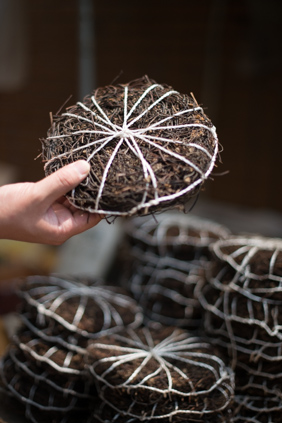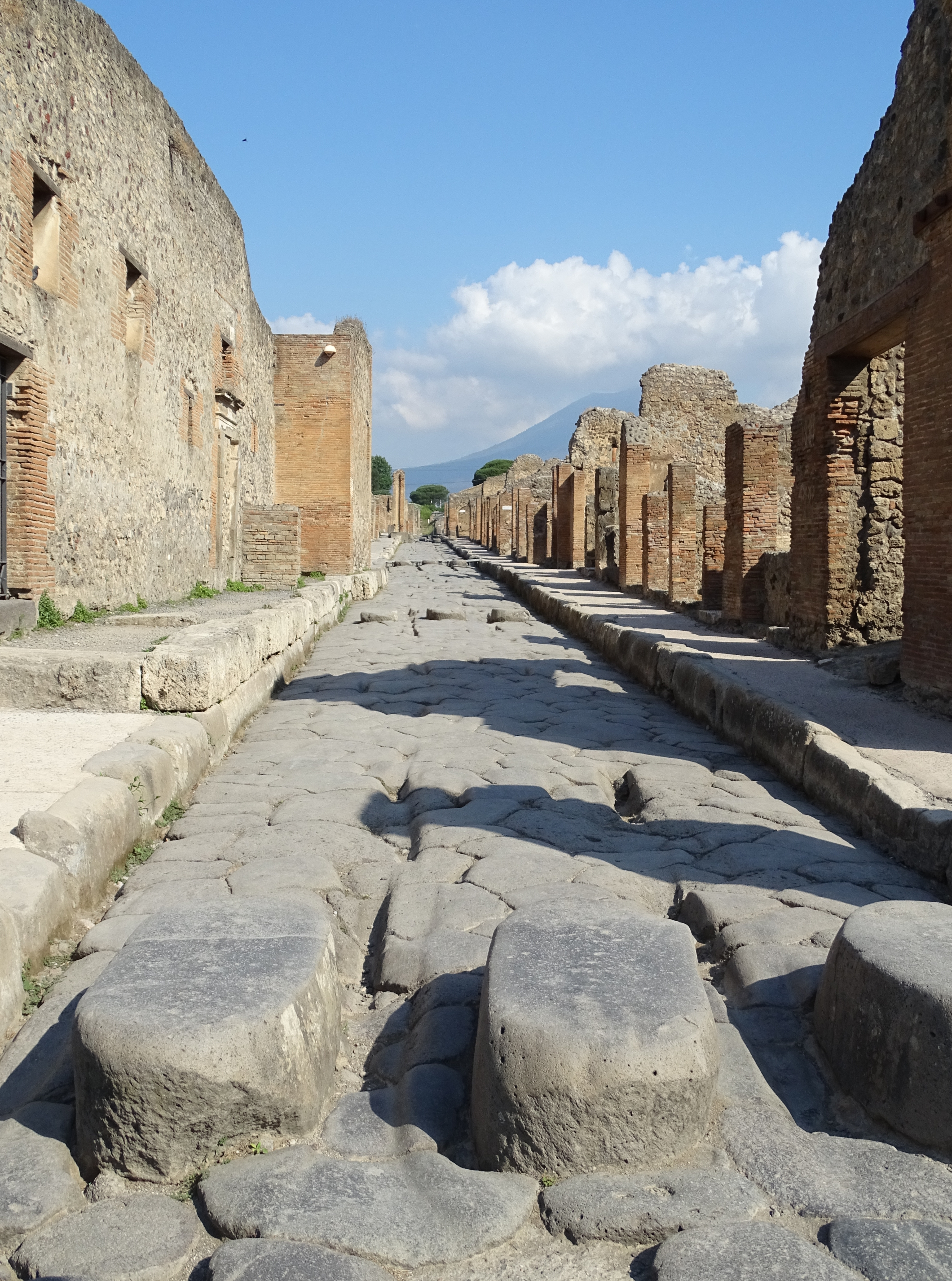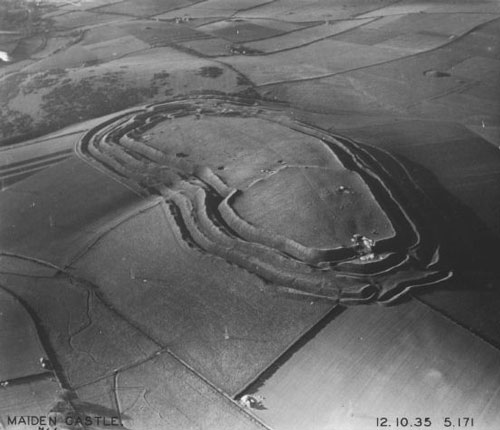|
Jenny's Lantern
Jenny's Lantern is an area of moorland in north Northumberland, England, taking its name from an 18th-century 'eye-catcher' folly sited towards the top of a small promontory hill above the River Aln. Situated on the southern slope of the Jenny's Lantern area is an Iron Age hillfort, overbuilt by and adjoined to a larger and very well preserved Romano-British culture, Romano-British stone-built settlement and field system. It partially collapsed during a storm in November 2021. Location and naming The Jenny's Lantern area is a small south-facing hill or promontory rising to above the Aln valley's floor, north-east of Bolton, Northumberland, Bolton and south of Eglingham, villages in north Northumberland. Confusingly, the site is north-east of a completely distinct Jenny's Lantern Hill. The site is immediately south of the boundary of Bewick and Beanley Moors SSSI. Jenny's Lantern, or Jenny of the Lantern, is the reputed Northumbrian name for Will-o'-the-wisp, a form of atmosp ... [...More Info...] [...Related Items...] OR: [Wikipedia] [Google] [Baidu] |
Hugh Percy, 1st Duke Of Northumberland
Hugh Percy, 1st Duke of Northumberland, (c. 17146 June 1786), was an English peer, landowner, and art patron. Origins He was born Hugh Smithson, the son of Lansdale Smithson (b. 1682) of Langdale and Philadelphia Revely. He was a grandson of Sir Hugh Smithson, 3rd Baronet, from whom he inherited the Smithson Baronetcy in 1733. Marriage, projects and patronages He changed his surname to ''Percy'' in 1749, nine years after his marriage with Lady Elizabeth Seymour (1716–1776), daughter of The 7th Duke of Somerset, on 16 July 1740, through a private Act of Parliament. She was '' Baroness Percy'' in her own right, and indirect heiress of the Percy family, which was one of the leading landowning families of England and had previously held the Earldom of Northumberland for several centuries. The title ''Earl of Northumberland'' passed by special remainder to Hugh Percy, as Elizabeth's husband, when her father died on 7 February 1750; he had been created 1st Earl of Northum ... [...More Info...] [...Related Items...] OR: [Wikipedia] [Google] [Baidu] |
Folly Buildings In England
In architecture, a folly is a building constructed primarily for decoration, but suggesting through its appearance some other purpose, or of such extravagant appearance that it transcends the range of usual garden buildings. Eighteenth-century English landscape gardening and French landscape gardening often featured mock Roman temples, symbolising classical virtues. Other 18th-century garden follies represented Chinese temples, Egyptian pyramids, ruined medieval castles or abbeys, or Tatar tents, to represent different continents or historical eras. Sometimes they represented rustic villages, mills, and cottages to symbolise rural virtues. Many follies, particularly during times of famine, such as the Great Famine in Ireland, were built as a form of poor relief, to provide employment for peasants and unemployed artisans. In English, the term began as "a popular name for any costly structure considered to have shown folly in the builder", the ''Oxford English Dictionary'' ... [...More Info...] [...Related Items...] OR: [Wikipedia] [Google] [Baidu] |
Bracken
Bracken (''Pteridium'') is a genus of large, coarse ferns in the family (biology), family Dennstaedtiaceae. Ferns (Pteridophyta) are vascular plants that have alternating generations, large plants that produce spores and small plants that produce gamete, sex cells (eggs and sperm). Brackens are noted for their large, highly divided leaves. They are found on all continents except Antarctica and in all environments except deserts, though their typical habitat is moorland. The genus probably has the widest distribution of any fern in the world. The word ''bracken'' is of Old Norse origin, related to Swedish ''bräken'' and Danish ''bregne'', both meaning fern. In the past, the genus was commonly treated as having only one species, ''Pteridium aquilinum'', but the recent trend is to subdivide it into about ten species. Like other ferns, brackens do not have seeds or fruits, but the immature fronds, known as ''fiddleheads'', are sometimes eaten, although some are #Toxicity, thought ... [...More Info...] [...Related Items...] OR: [Wikipedia] [Google] [Baidu] |
Quern-stone
Quern-stones are stone tools for hand- grinding a wide variety of materials. They are used in pairs. The lower stationary stone of early examples is called a saddle quern, while the upper mobile stone is called a muller, rubber or handstone. The upper stone was moved in a back-and-forth motion across the saddle quern. Later querns are known as rotary querns. The central hole of a rotary quern is called the eye, and a dish in the upper surface is known as the hopper. A handle slot contained a handle which enabled the rotary quern to be rotated. They were first used in the Neolithic era to grind cereals into flour. Uses of quern-stones An old Gaelic proverb is "The quern performs best when the grindstone has been pitted." Design of quern-stones The upper stones were usually concave while the lower ones were convex. Quern-stones are frequently identifiable by their grooved working surfaces which enabled the movement of flour. Sometimes a millrind was present as a piece of wood (or ... [...More Info...] [...Related Items...] OR: [Wikipedia] [Google] [Baidu] |
Lacrymatory
A lacrymatory, lachrymatory or lacrimarium (from the Latin ''lacrima'', 'tears, tear') is a small vessel of terracotta or, more frequently, of glass, found in Rome, Roman and late Greece, Greek tombs, and formerly supposed to have been bottles into which mourners dropped their tears. They contained perfumes and unguents, and the finding of so many of these vessels in tombs is due to the use of unguents at funeral ceremonies. They are shaped like a Spindle (textiles), spindle, or a flask with a long small neck and a body in the form of a bulb. The term ''lacrimarium'' is deceptive; there is no evidence from the ancient world to suggest the use of these glass or ceramic vessels as 'tear-catchers'.Anderson-Stojanovic, V.R. 1987. "The Chronology and Function of Ceramic Ungugentaria", ''American Journal of Archaeology'' Vol. 91. 105–122. References External linkslacrymatory at the Free Dictionary Funerals {{AncientRome-stub ... [...More Info...] [...Related Items...] OR: [Wikipedia] [Google] [Baidu] |
Roman Road
Roman roads ( la, viae Romanae ; singular: ; meaning "Roman way") were physical infrastructure vital to the maintenance and development of the Roman state, and were built from about 300 BC through the expansion and consolidation of the Roman Republic and the Roman Empire. They provided efficient means for the overland movement of armies, officials, civilians, inland carriage of official communications, and trade goods. Roman roads were of several kinds, ranging from small local roads to broad, long-distance highways built to connect cities, major towns and military bases. These major roads were often stone-paved and metaled, cambered for drainage, and were flanked by footpaths, bridleways and drainage ditches. They were laid along accurately surveyed courses, and some were cut through hills, or conducted over rivers and ravines on bridgework. Sections could be supported over marshy ground on rafted or piled foundations.Corbishley, Mike: "The Roman World", page 50. Warwick Pr ... [...More Info...] [...Related Items...] OR: [Wikipedia] [Google] [Baidu] |
Devil's Causeway
The Devil's Causeway is a Roman road in Northumberland, in North East England. It branches off Dere Street north of Corbridge and can be traced through Northumberland for about north to Berwick-upon-Tweed. Description The Devil's Causeway is a Roman roadway that is thought to pre-date Hadrian's Wall. It started at the Portgate, slightly north of Corbridge, where it branched off the Roman Dere Street ( A68 road) as it continues north into Redesdale on its way to Caledonia. The Devil's Causeway continued to near the mouth of the River Tweed at Berwick-Upon-Tweed, where it was used to support a presumed military port. Less than to the east of the Portgate is the Roman fort of Onnum, also known as Halton Chesters. It is probable that the Causeway was patrolled by a cavalry unit based there. The fort at Halton Chesters was built across the line of the wall facing north, halfway between milecastles 21 and 22 about east of Dere Street. The original Hadrianic fort was rather ... [...More Info...] [...Related Items...] OR: [Wikipedia] [Google] [Baidu] |
Multivallate
A hillfort is a type of earthwork used as a fortified refuge or defended settlement, located to exploit a rise in elevation for defensive advantage. They are typically European and of the Bronze Age or Iron Age. Some were used in the post-Roman period. The fortification usually follows the contours of a hill and consists of one or more lines of earthworks, with stockades or defensive walls, and external ditches. Hillforts developed in the Late Bronze and Early Iron Age, roughly the start of the first millennium BC, and were used in many Celtic areas of central and western Europe until the Roman conquest. Nomenclature The spellings "hill fort", "hill-fort" and "hillfort" are all used in the archaeological literature. The ''Monument Type Thesaurus'' published by the Forum on Information Standards in Heritage lists ''hillfort'' as the preferred term. They all refer to an elevated site with one or more ramparts made of earth, stone and/or wood, with an external ditch. Ma ... [...More Info...] [...Related Items...] OR: [Wikipedia] [Google] [Baidu] |
Detail Of Outer Rampart Of Iron Age Hillfort On Jenny's Lantern - Geograph
Detail(s) or The Detail(s) may refer to: Film and television * ''Details'' (film), a 2003 Swedish film * ''The Details'' (film), a 2011 American film * '' The Detail'', a Canadian television series * "The Detail" (''The Wire''), a television episode Music * ''Details'' (album), by Frou Frou, 2002 * Detail (record producer), Noel Fisher (born c. 1978), American music producer and performer * The Details, a Canadian rock band Periodicals * ''DETAIL'' (professional journal), an architecture and construction journal * ''Details'' (magazine), an American men's magazine See also * Auto detailing, a car-cleaning process * Level of detail (computer graphics), a 3D computer graphics concept * Security detail, a team assigned to protect an individual or group * Detaille Island Detaille Island is a small island off the northern end of the Arrowsmith Peninsula in Graham Land, Antarctica. From 1956 to 1959 it was home to "Base W" of the British Antarctic Survey and closed after th ... [...More Info...] [...Related Items...] OR: [Wikipedia] [Google] [Baidu] |
Brizlee Tower
Brizlee Tower (sometimes Brislee Tower) is a Grade 1 listed folly set atop a hill in Hulne Park, the walled home park of the Duke of Northumberland in Alnwick, Northumberland. The tower was erected in 1781 for Hugh Percy, 1st Duke of Northumberland, and commands extensive views over North Northumberland and the Borders. The tower Brizlee Tower is a 26-metre-high elaborately ornamental tower in dressed stone set at the edge of the northern escarpment of Brizlee Hill, overlooking Hulne Park, the "home park" of Alnwick Castle. The hill's relative elevation (about 177 metres above sea-level, in comparison with the valley floor's 44 metres) makes the tower's site a natural vantage point with all-encompassing views to the west, north and east – including the vale of Whittingham, through which the River Aln flows; the sites of numerous country seats past and present, such as at Eslington, Bolton, Callaly, Shawdon, Broomepark, and Lemington; Hulne Priory within the park walls; ... [...More Info...] [...Related Items...] OR: [Wikipedia] [Google] [Baidu] |



_1934.jpg)



